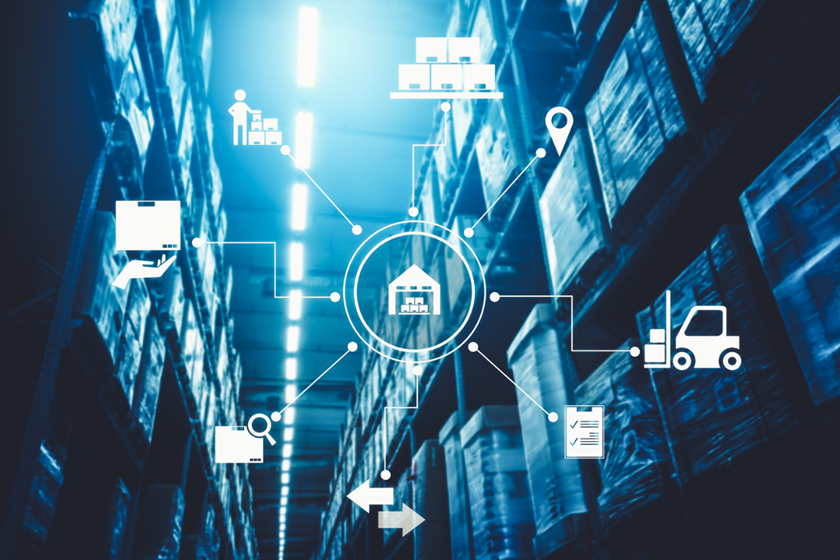Supply Chain News: Cybersecurity Risks Enter the Supply Chain Spotlight

Cybersecurity has become one of the most urgent threats to global supply chains in 2025. Once seen as an IT issue, cyber risk is now disrupting procurement, logistics, and operations at scale. From ransomware attacks on retailers to data breaches at logistics firms, the latest supply chain news shows that digital vulnerabilities can trigger real-world consequences—delays, shortages, and reputational damage. Supply chains are only as strong as their weakest digital link, and that link is under increasing attack.
Cyberattacks Disrupt Retail, Logistics, and Manufacturing
Recent incidents underscore the growing exposure of supply chains to cyber risks.
-
Marks & Spencer Breach: A major cyberattack forced the UK retailer to suspend food distribution, leaving shelves empty and suppliers unpaid. Supply chain news coverage revealed how attackers exploited legacy IT systems in logistics scheduling.
-
Logistics Platforms Targeted: Several global freight forwarders have faced ransomware attacks that froze container bookings and tracking systems, delaying shipments for days.
-
Manufacturing Plants: Automotive and industrial manufacturers have suffered downtime after cyber intrusions compromised production line software.
These disruptions highlight how cyber incidents cascade through supplier networks, creating both operational and financial damage.
Why Supply Chains Are Attractive Targets
Supply chain networks offer attackers multiple points of entry—and multiple opportunities for leverage.
-
Complex Vendor Ecosystems: With thousands of Tier 2 and Tier 3 suppliers, many using outdated digital tools, attackers exploit the weakest link to move upstream.
-
Critical Infrastructure: Ports, trucking fleets, and warehouse systems have become digitized, making them high-value targets for ransomware operators.
-
Data Rich Environments: Supplier contracts, pricing, and customer shipment data are lucrative for cybercriminals and state-backed actors.
According to recent supply chain news, attackers increasingly exploit supplier portals, logistics platforms, and even IoT devices to gain entry.
The Financial and Reputational Fallout
Cyber incidents are not just IT disruptions—they are bottom-line risks.
-
Operational Delays: Frozen systems lead to missed shipments, production stoppages, and penalties.
-
Financial Impact: Companies face ransom demands, recovery costs, and potential regulatory fines.
-
Reputation: Customers and partners lose trust in supply chains unable to secure sensitive data or maintain continuity.
Supply chain news reports show investors are now pressuring companies to disclose cyber vulnerabilities and resilience plans, treating them as material financial risks.
Regulatory Pressure and Compliance Demands
Governments are tightening requirements for cyber resilience in supply chains.
-
U.S. Executive Orders: Recent mandates require federal contractors to meet stricter cybersecurity standards across their supply bases.
-
EU NIS2 Directive: Expanding obligations to logistics and manufacturing firms, including mandatory breach reporting.
-
Sector-Specific Rules: Pharma and defense industries now face cybersecurity requirements tied directly to licensing and procurement contracts.
As highlighted in supply chain news, compliance with these frameworks is no longer optional—it is a prerequisite for doing business.
Building Cyber-Resilient Supply Chains
Companies are moving from ad hoc cyber defenses to structured resilience strategies.
-
Third-Party Risk Management: Procurement teams are embedding cybersecurity audits into supplier evaluations, requiring minimum standards before contracts are signed.
-
Zero-Trust Architectures: IT leaders are adopting “trust no one” models where every user and device must be authenticated, limiting lateral movement by attackers.
-
Cyber Range Simulations: Firms are running crisis exercises that simulate ransomware or denial-of-service attacks on supply chain platforms.
-
Data Segmentation: Sensitive information is increasingly stored in separate, encrypted environments to reduce breach impact.
According to supply chain news, the shift is toward embedding cybersecurity into the DNA of supply chain management—not treating it as a bolt-on IT task.
Strategic Takeaways for Supply Chain Leaders
From the latest supply chain news, several priorities are clear:
-
Treat cybersecurity as a core supply chain risk, not just an IT issue.
-
Embed cyber audits into procurement and supplier onboarding.
-
Invest in zero-trust systems and encrypted data flows across networks.
-
Prepare response plans with cyber range exercises to stress-test resilience.
-
Stay ahead of regulatory requirements, from NIS2 to U.S. federal mandates.
Conclusion: Cybersecurity as the Next Frontier of Resilience
The latest supply chain news confirms that digital vulnerabilities are now as dangerous as physical bottlenecks. Cyberattacks on retailers, logistics platforms, and manufacturers prove that a single breach can cascade into systemic disruption.
In 2025, resilience is no longer defined only by diversification, sustainability, or predictive analytics. It now requires robust cybersecurity embedded into every supplier relationship and operational process. Companies that invest early in digital defenses will protect not only their data but also their ability to deliver. Those that lag risk fines, reputational loss, and the kind of disruptions that no safety stock can cover.
Cybersecurity has officially entered the supply chain spotlight—and it is here to stay.








